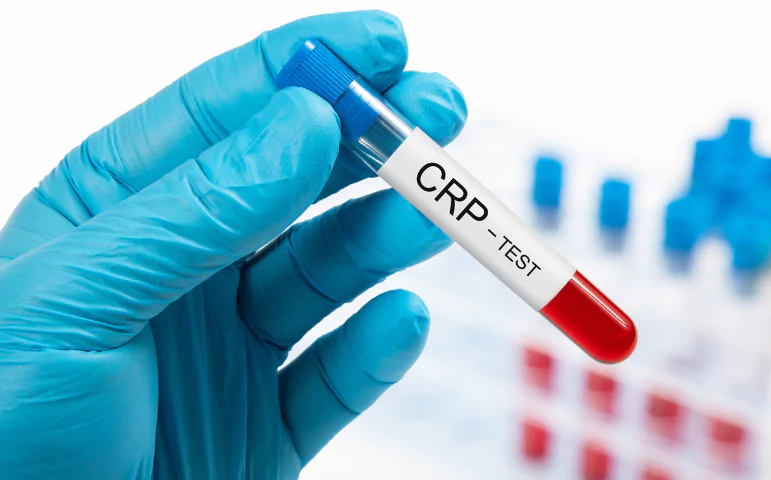
➢ Introduction:
Open with a scenario or statistic highlighting the prevalence of inflammation-related health issues in society. Introduce CRP as a crucial biomarker in assessing inflammation and its impact on overall health.
➢ Unraveling CRP:
Define CRP (C-Reactive Protein) and its role as a marker of systemic inflammation. Explain how CRP is produced by the liver in response to inflammatory signals, serving as an early warning system for potential health threats.
➢ Applications of CRP Testing:
Explore the diverse uses of CRP testing in healthcare, including:
• Diagnosing and monitoring inflammatory conditions such as rheumatoid arthritis, lupus, and Crohn’s disease.
• Assessing infection severity and treatment response.
• Predicting cardiovascular risk, as elevated CRP levels are linked to heart disease and stroke.
➢ Interpreting CRP Results:
Break down the interpretation of CRP levels, highlighting:
• Normal CRP levels (below 1 mg/L) indicating low inflammation.
• Moderate CRP levels (1-10 mg/L) suggesting mild to moderate inflammation.
• High CRP levels (above 10 mg/L) signaling severe inflammation or infection.
➢ Factors Influencing CRP Levels:
Discuss various factors that can affect CRP levels, such as:
• Age, gender, and genetics.
• Lifestyle factors like smoking, diet, and physical activity.
• Chronic conditions such as obesity, diabetes, and autoimmune disorders.
➢ Preparing for a CRP Test:
Provide practical tips for patients preparing for a CRP test, such as:
• Fasting may not be required, but patients should follow any specific instructions from their healthcare provider.
• Informing the healthcare team about any medications or supplements being taken, as some can affect CRP levels.
➢ Empowering Health Through CRP Awareness:
Highlight the importance of understanding CRP levels for proactive health management. Encourage readers to advocate for CRP testing as part of routine health assessments and to discuss results with their healthcare provider.